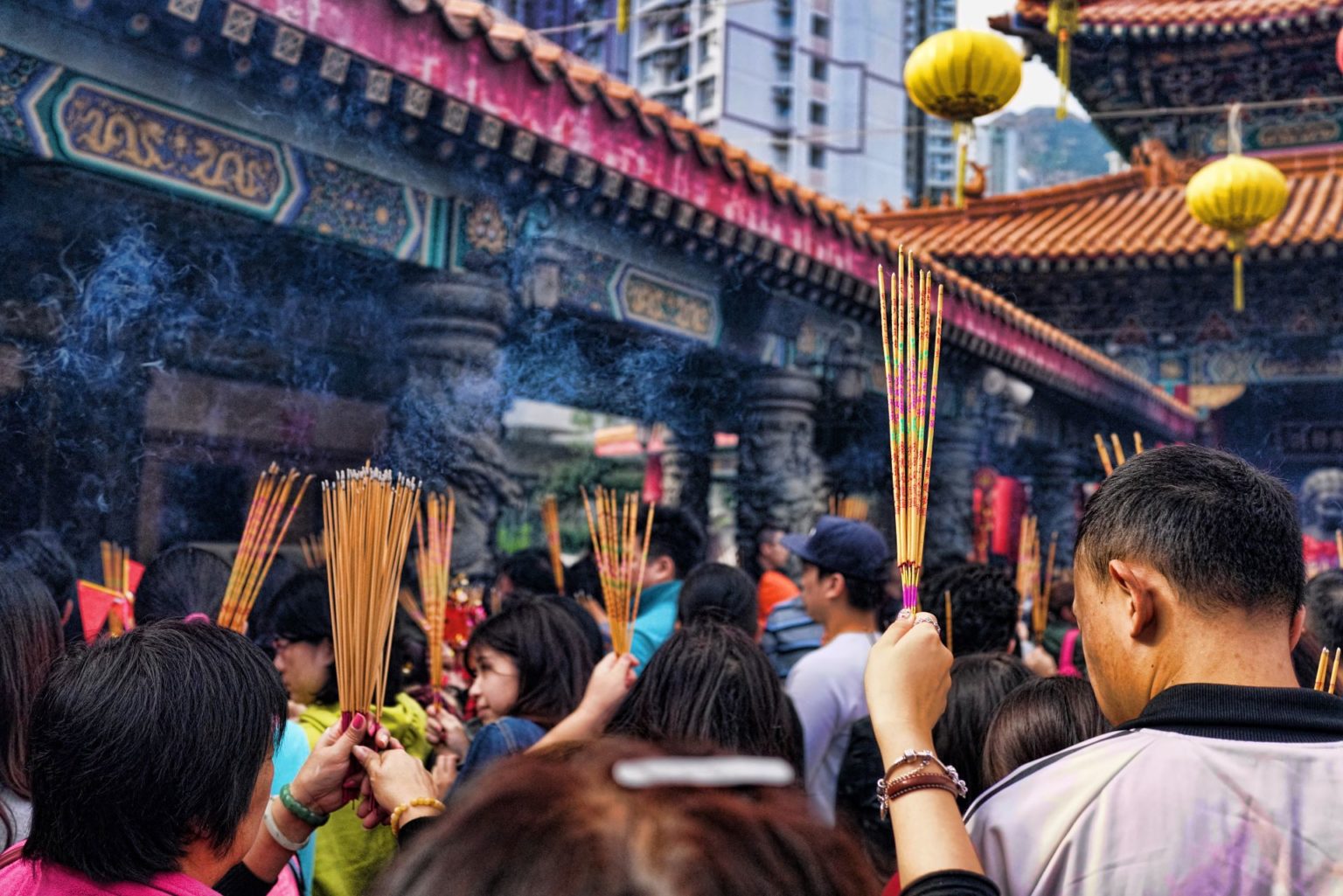Temples are a part of everyday life in Hong Kong, so it’s hardly surprising that the city is home to more than 600 of these religious spaces. Most temples in the SAR are Buddhist and Taoist, and you can find them within the city’s bustling neighbourhoods and nestled in its verdant hills.
Here’s our list of the best temples to visit in the city. Admission is free for all visitors, but there may be restrictions regarding appropriate attire and photography inside sacred halls. Many of these temples have restaurants that serve vegetarian and vegan fare, in case you feel peckish during your visit.
Chi Lin Nunnery — Diamond Hill
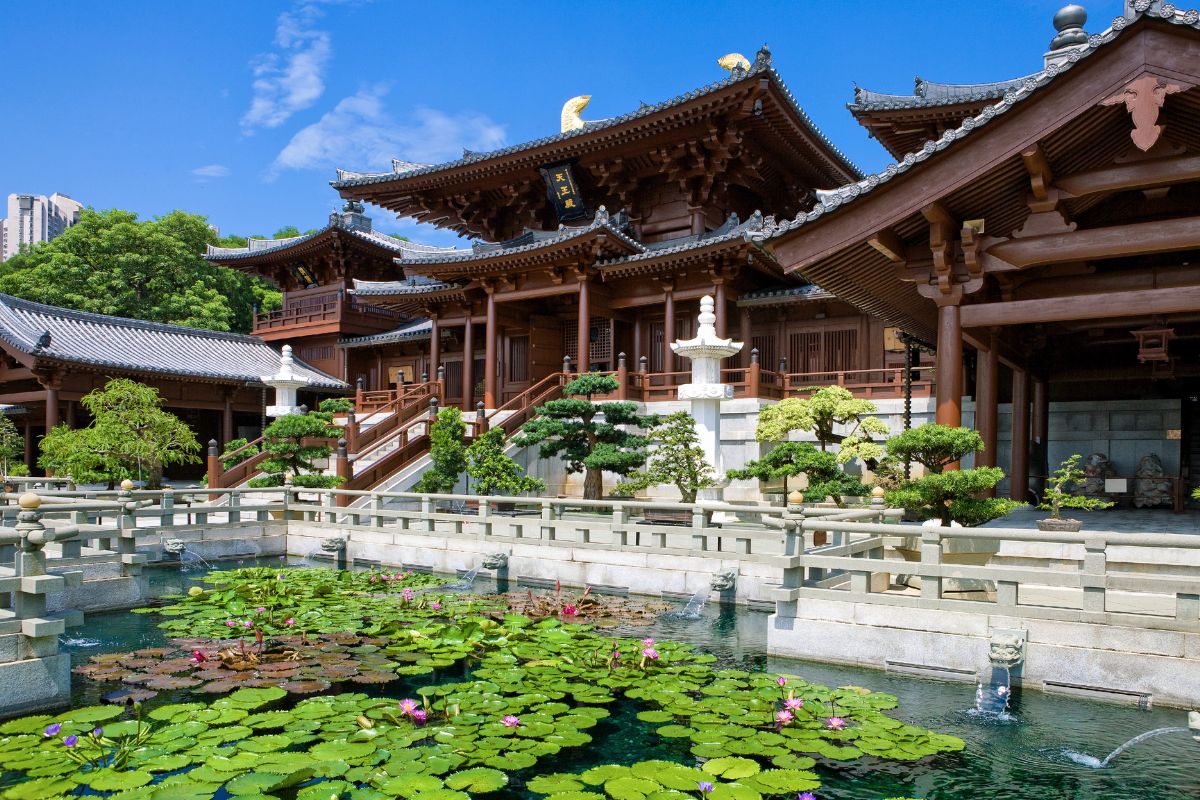
Founded in 1934, the Chi Lin Nunnery is a Buddhist temple complex located in Diamond Hill, Kowloon. It features a stunning traditional Chinese architectural style, with halls, courtyards, and gardens. The nunnery also houses a collection of Buddhist relics and statues, offering visitors a serene and culturally enriching experience.
3 Chi Lin Drive, Diamond Hill | +852 2354 1888
Tsz Shan Monastery — Tai Po
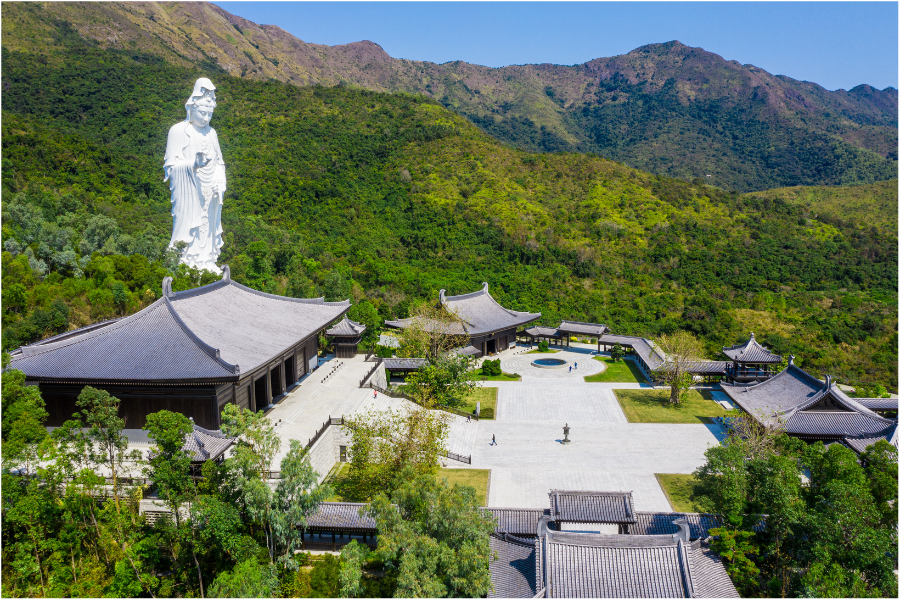
This 500,000 sq. ft compound in the Ting Tsz Hills opened in 2015. Construction of the Tang dynasty-styled monastery was funded by billionaire Li Ka-Shing and its most striking feature is the 76-metre-tall steel-framed, bronze-forged white statue of Guan Yin (also known as Kwun Yum), which is the world’s biggest statue dedicated to the goddess. Entry is free, but you need to make an appointment online to visit.
88 Universal Gate Road, Tai Po, Hong Kong | +852 2123 8666
Miu Fat Buddhist Monastery — Tuen Mun
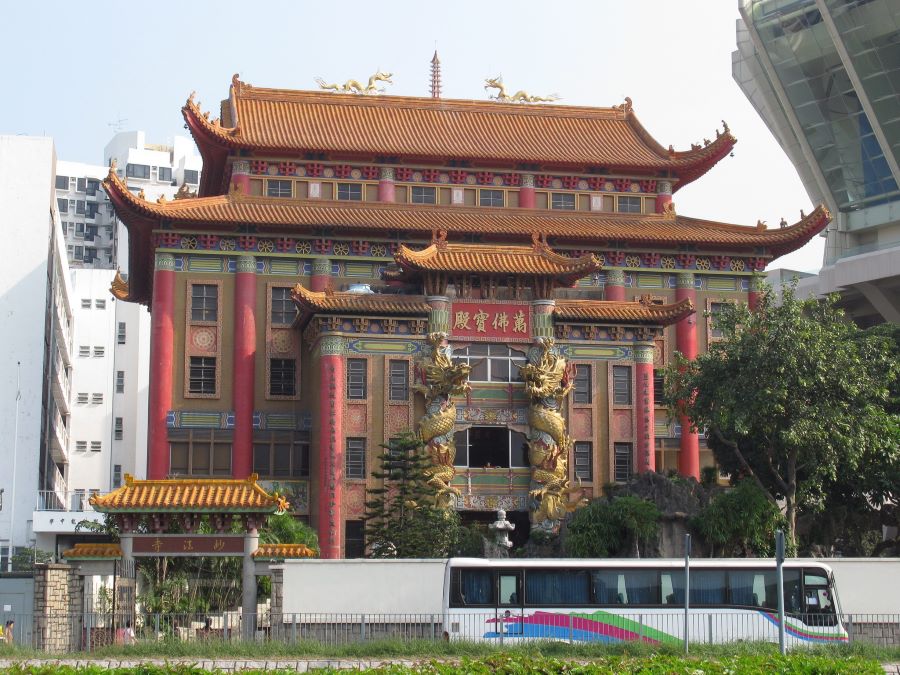
There are two buildings of interest in the Miu Fat Buddhist Monastery compound. The first is the Ten Thousand Buddhas Hall with its gold dragon-adorned pillars at the entrance. Once inside, you will see the Mahavira Hall with its three giant gold statues of Buddha Shakyamuni, and walls with the Buddha reliefs that give the building its name. The adjoining Miu Fat Monastery main complex is a more modern structure topped by a lotus-shaped hall.
18 Castle Peak Road, Tuen Mun, New Territories | +852 2461 8567
Wong Tai Sing Temple — Wong Tai Sin
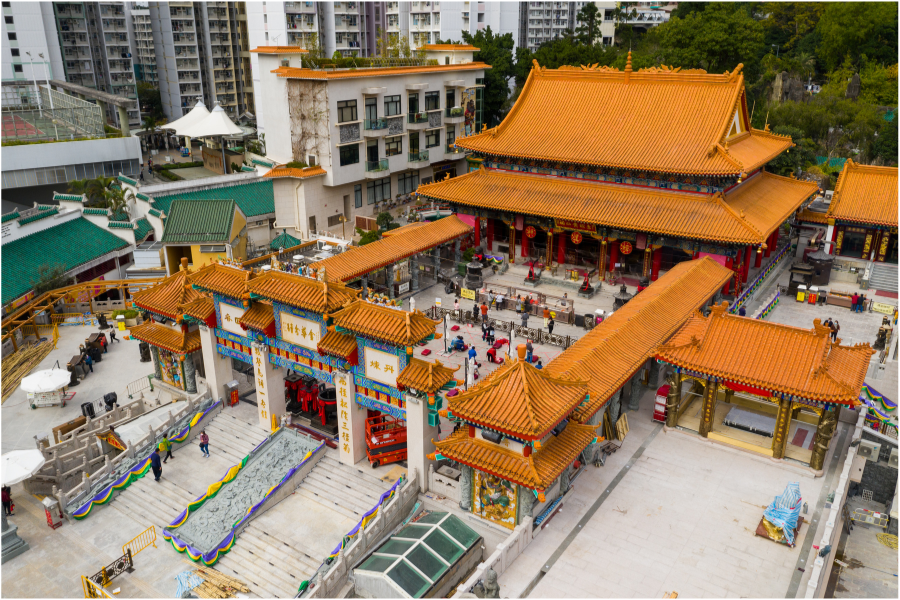
This Taoist temple is packed on Chinese New Year’s Eve, when believers of Wong Tai Sin come here to burn incense sticks and pray for good luck for the year ahead. The highlights of the temple’s traditional Chinese architecture are red pillars, a gold roof with blue friezes, yellow latticework, and multi-coloured carvings. There is also a Nine-Dragon Wall modelled after one in Beijing and the Three Saints Hall dedicated to Lord Guandi, Bodhisattva Guanyin, and Lü Dongbin.
2, Chuk Yuen Village, Wong Tai Sin, Kowloon | +852 2327 8141
Ten Thousand Buddhas Monastery — Sha Tin
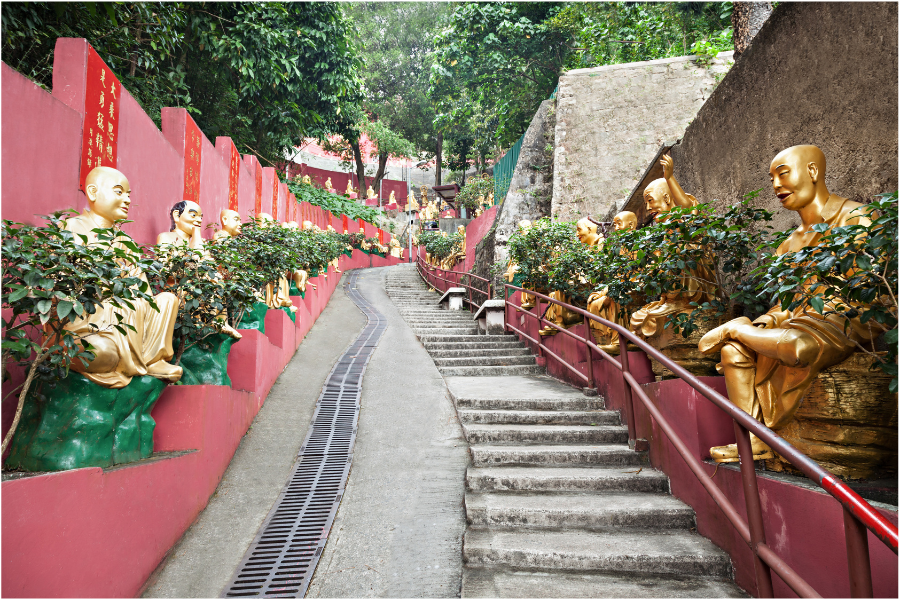
This is not a monastery as no monks reside on the premises, and there are actually close to 13,000 miniature Buddha statues. Begin your visit by walking up 431 steps lined with 500 golden statues of arhats — saints who have achieved enlightenment. The monastery — which comprises five temples, four pavilions, one veranda and a pagoda — is spread across two levels. The first houses the temple with the Buddha statues, while the second is the upper terrace.
220 Pai Tau Village, Sha Tin | +852 2691 1067
Man Mo Temple — Sheung Wan
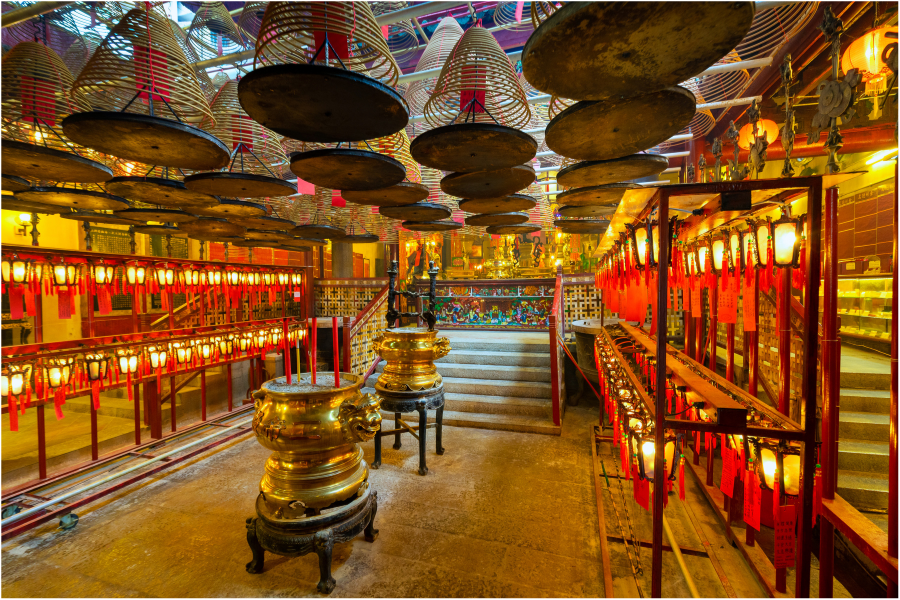
The spiral incense coils suspended from the ceiling of the most famous and largest Man Mo temple in Hong Kong are the subject of many pictures online. The main building is the temple dedicated to the civil god, Man Cheong, and the martial god, Mo Tai. Lit Shing Kung is for the worship of all heavenly gods, and Kung Sor is an assembly hall to discuss community affairs and settle disputes.
Hollywood Road, Sheung Wan | +852 2540 0350
Pak Tai Temple — Wan Chai
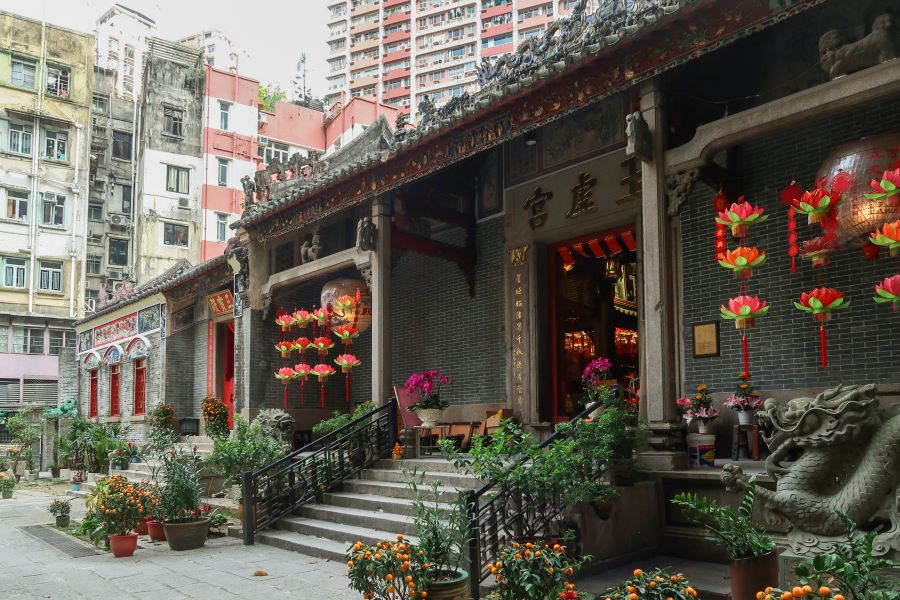
Followers of the martial deity Pak Tai flock to this temple during the Pak Tai Festival. This is the biggest temple on Hong Kong Island and houses a three-metre-high Ming Dynasty statue of the deity built in 1603, and antique bells cast in 1863. There are halls devoted to other deities, most notably Lung Mo (Dragon Mother), Choi Sun (God of Wealth), and Tin Hau (Goddess of the Sea).
Lung On St, Wan Chai | +852 2573 2086
Po Lin Monastery — Ngong Ping
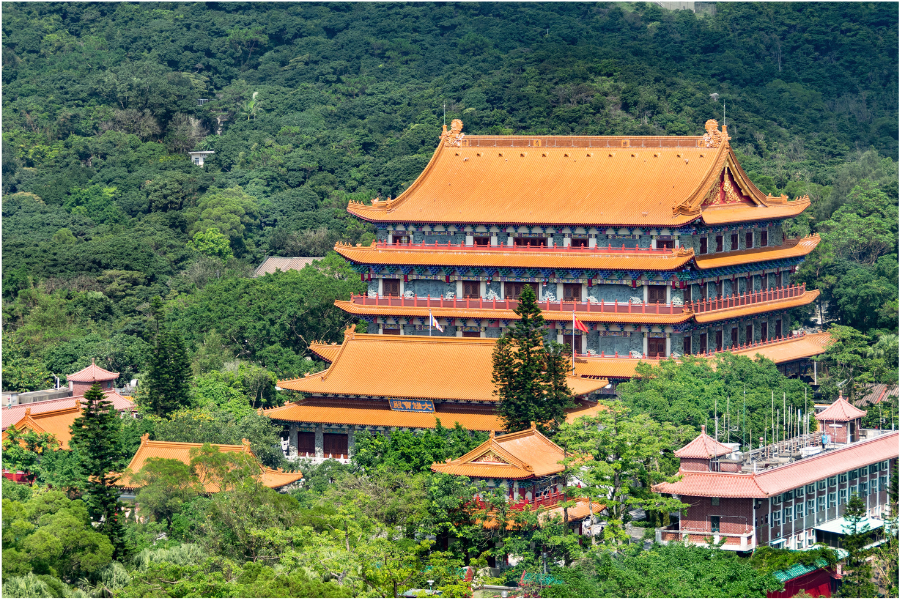
What started out as “The Big Hut” founded by three monks in 1906 is now one of the main attractions on Lantau Island. The Po Lin Monastery’s main shrine hall has three bronze statues of the Buddha — each representing his past, present and future lives — and many Buddhist scriptures. Other attractions include the Tian Tan Buddha, a large outdoor bronze Buddha statue, and the resplendent Grand Hall of Ten Thousand Buddhas.
Ngong Ping, Lantau | +852 2985 5248
Yaumatei Tin Hau Temple — Yau Ma Tei
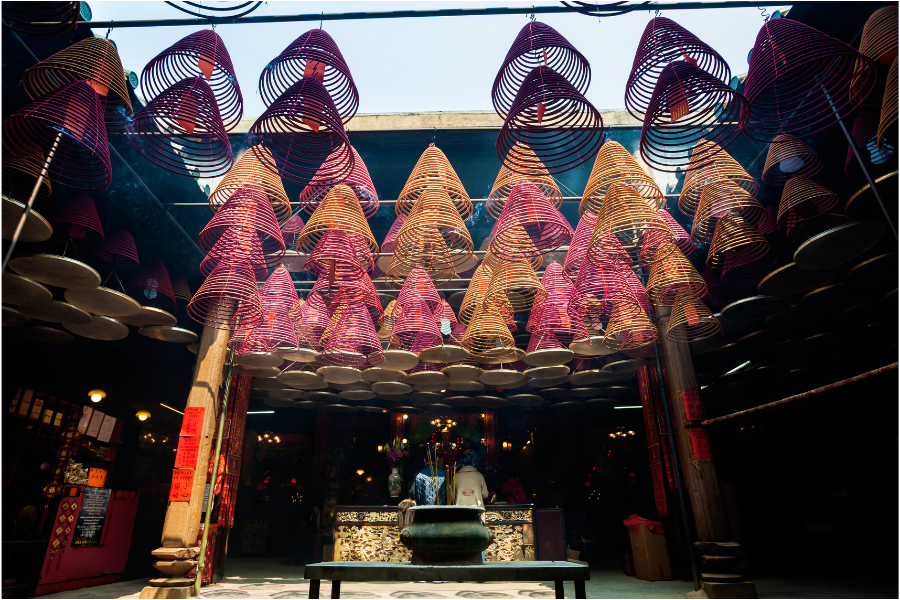
Of the more than 100 temples in Hong Kong dedicated to Tin Hau, this is the best-known. The temple dedicated to the Goddess of the Sea was originally on the harbourfront, but is now further inland as a result of reclamation. It is part of a five-building complex that houses a Shing Wong Temple, a Kwun Yum temple, a She Tan (originally a community hall), and a Hsu Yuen (disused study hall).
Temple Street, Yau Ma Tei, Kowloon | +852 2385 0759
Western Monastery — Tsuen Wan
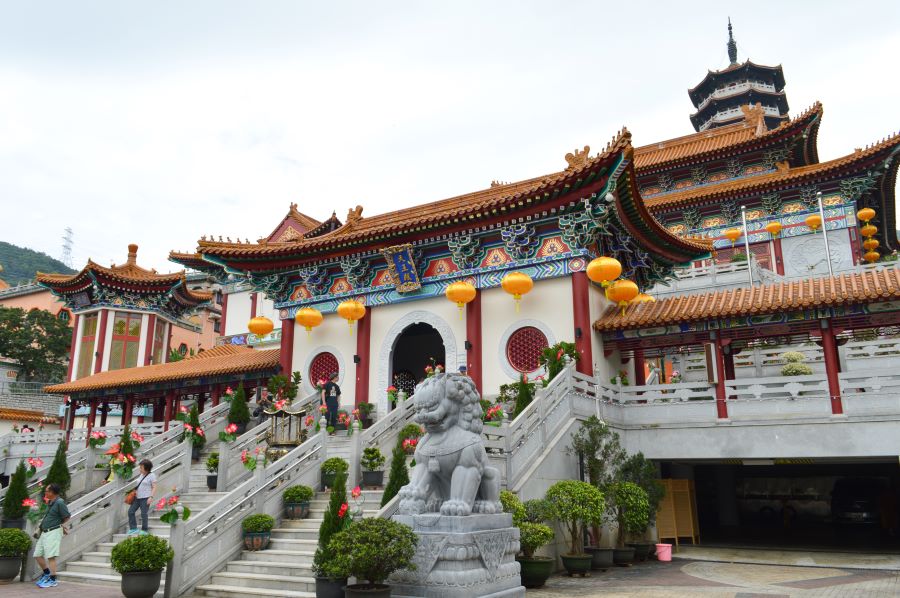
This relatively new Buddhist temple was built by the Hong Kong Buddhi Siksa Society in 1970, and expanded over the course of the next two decades. The architecture of the nine structures of the monastery is reminiscent of a Chinese palace, with traditional yellow tiled roofs and flying eaves. There is also an exhibition space with statues and scriptures dedicated to the Goddess of Mercy Kwun Yum.
Sam Dip Tam, Lo Wai Tsuen, Tsuen Wan, New Territories | +852 2411 5111
Fung Ying Seen Koon — Fanling
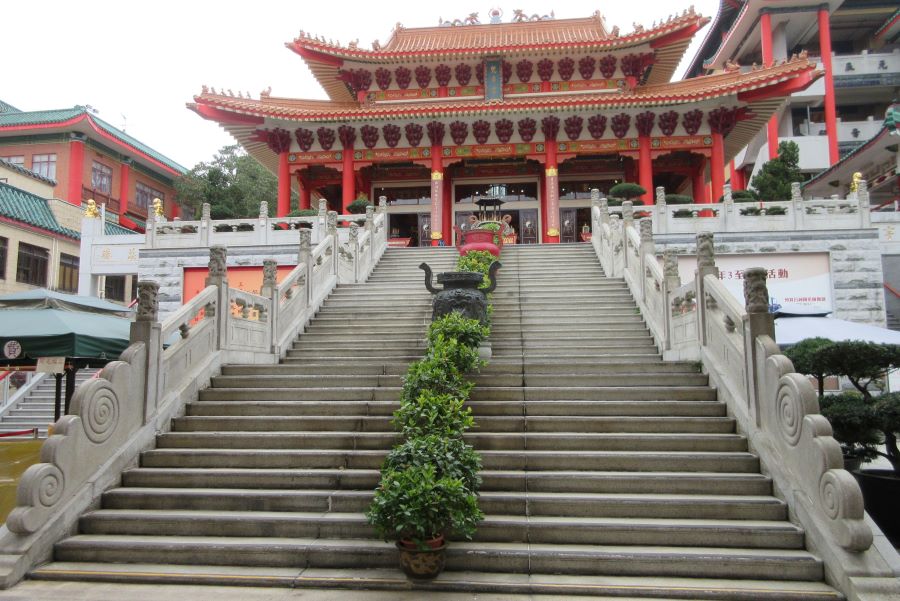
The Taoist temple Fung Ying See Koon temple has several attractions that make it worth the trip all the way to Fanling. It boasts a Grand Temple dedicated to Taishang Laojun, Lü Dongbin and Qiu Chuji, another temple for Guanyin, and a Yuen San Temple for the worship of Doumu and the sixty Great Generals of the Chinese sexagesimal cycle. Other features include the Yellow Emperor Inquires After the Tao sculpture and The Scroll of Eighty-Seven Immortals carving.
66 Pak Wo Road, Fanling | +852 2669 9186
Kwun Yum Temple — Hung Hom
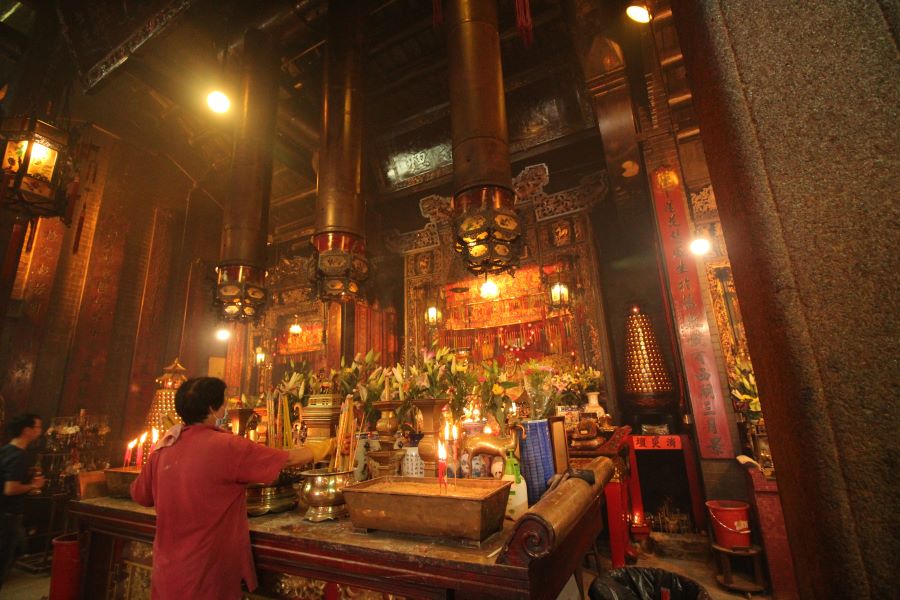
This is the most famous temple dedicated to the Goddess of Mercy in Hong Kong. It was built in 1873 in the style of a traditional Chinese temple. When Hung Hom came under fire during World War II, it is said that people who took shelter in the temple remained unharmed, despite there being several casualties in the neighbouring school. This incident was believed to be a miracle performed by Kwun Yum.
15 Station Lane, Hung Hom | +852 2363 4930
Lin Fa Kung — Tai Hang
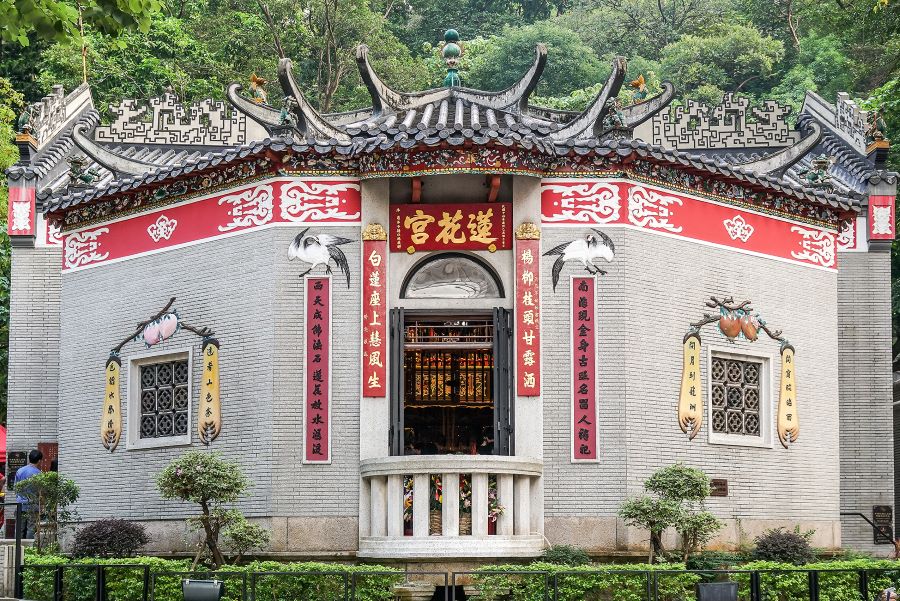
This temple dedicated to Kwun Yum in the old fishing village of Tai Hang is the starting point of the neighbourhood’s iconic Fire Dragon Dance. Its architecture is also unique as its front hall has a half-octagonal shape with a double-eaves-tended roof and a veranda with western-style balustrades. Unlike traditional temples that have their entrances in the middle of the facade, visitors can enter this temple using one of two staircases on either side of the hall.
Lily Street, Tai Hang, Causeway Bay | +852 2578 2552
FAQ about temples in Hong Kong
What are the most famous temples in Hong Kong?
The Sheung Wan Man Mo Temple Wan, the Wong Sai Tin Temple, the Ten Thousand Buddhas Monastery, and the Yaumatei Tin Hau Temple.
What is the largest Buddhist temple in Hong Kong?
The Po Lin Monastery on Lantau Island, which includes the Tian Tan Buddha, is the largest Buddhist temple in Hong Kong.
How many temples are in Hong Kong?
There are about 600 temples, shrines, and monasteries in Hong Kong. They include Buddhist and Taoist temples and monasteries, as well as joss houses and temples managed by the Chinese Temples Committee.
Header image credits: Jamie Lloyd via Flickr


